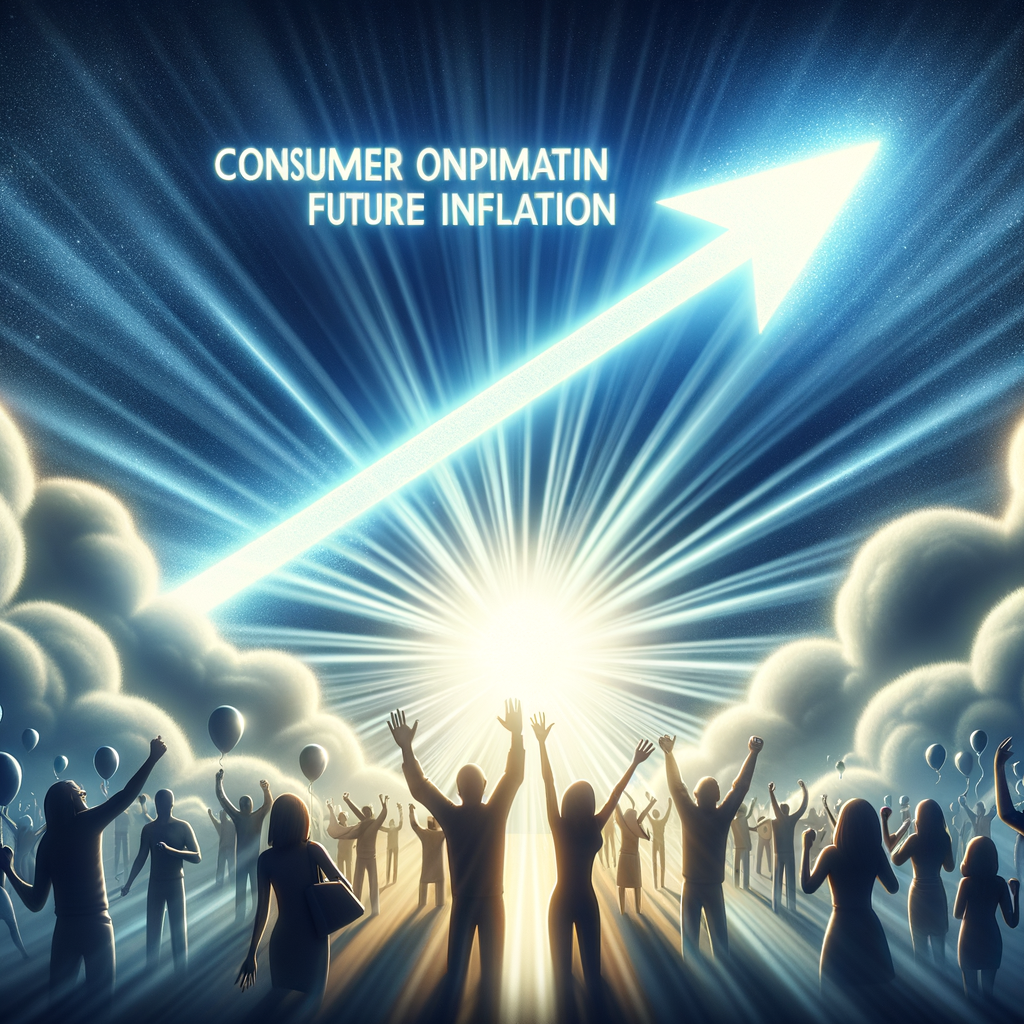Analyzing the Surge in Consumer Optimism on Future Inflation: Insights from the NY Fed Report
Consumers’ Optimism Towards Future Inflation Reaches New Heights, According to NY Fed
In a remarkable turn of events, consumer sentiment regarding future inflation has soared, reaching levels of optimism not seen in recent times. This surge in confidence, as reported by the New York Federal Reserve, signals a significant shift in public perception, suggesting that the specter of rising prices may be starting to recede in the minds of many Americans.
The latest findings from the NY Fed’s Survey of Consumer Expectations paint an encouraging picture. After months, if not years, of concern over the persistent climb of inflation, it appears that consumers are finally seeing a light at the end of the tunnel. This newfound optimism is not without foundation; it is bolstered by a combination of factors that have begun to influence the economic landscape in a positive way.
Firstly, the stabilization of certain key economic indicators has played a pivotal role in shaping this optimistic outlook. Inflation rates, which had been on an upward trajectory, have shown signs of plateauing and even retreating in some sectors. This development has been keenly observed by consumers, who are now adjusting their expectations accordingly. Moreover, the job market remains robust, with unemployment rates holding at historically low levels, providing consumers with a sense of security and confidence in their financial futures.
Furthermore, the proactive measures taken by policymakers have also contributed to this shift in sentiment. The Federal Reserve’s commitment to reining in inflation through interest rate hikes and other monetary policy tools has reassured the public that steps are being taken to address the issue head-on. This assurance from the central bank has been instrumental in tempering fears of uncontrolled inflation.
Additionally, the gradual easing of supply chain disruptions, which had been a significant driver of inflation during the pandemic, has also helped to alleviate concerns. As the flow of goods becomes more consistent and reliable, the pressure on prices has begun to ease, reinforcing the belief that inflation may be on a downward trajectory.
It is important to note that this optimism is not just a fleeting sentiment; it is reflected in the concrete financial decisions being made by consumers. The NY Fed report indicates that people are more willing to make major purchases, such as homes and cars, which they had been putting off due to inflationary pressures. This willingness to spend is a testament to their confidence in a more stable and predictable pricing environment in the near future.
The ripple effects of this optimism are far-reaching. As consumers feel more assured about the economy, their spending habits are likely to stimulate growth and further stabilize prices. This virtuous cycle of confidence and economic activity bodes well for the overall health of the economy.
In conclusion, the NY Fed’s report on consumer expectations is a beacon of hope in an economic climate that has been fraught with uncertainty. The surge in optimism towards future inflation is not only a reflection of improving economic conditions but also a catalyst for continued recovery and growth. As consumers look ahead with a brighter outlook, the stage is set for a period of economic stability that could benefit all sectors of society. This wave of positivity, if sustained, has the potential to transform the economic narrative of the post-pandemic world, ushering in an era of renewed prosperity and financial well-being.
The Impact of Rising Consumer Confidence on Inflation Expectations: A Deep Dive into NY Fed Findings
Consumers’ Optimism Towards Future Inflation Reaches New Heights, According to NY Fed
In a remarkable turn of events, consumer sentiment regarding future inflation has soared, reaching levels of optimism not seen in recent times. This surge in confidence, as reported by the New York Federal Reserve, suggests that the public is beginning to see a light at the end of the inflationary tunnel. The newfound belief that inflation rates will settle down in the foreseeable future is not just a fleeting sentiment; it is a powerful economic indicator that could have far-reaching implications for the economy.
The NY Fed’s findings are a breath of fresh air in an environment that has been clouded by the specter of rising prices. For months, consumers have been grappling with the financial strain of increased costs for goods and services, from groceries to gasoline. However, the latest data indicates a shift in perspective, with individuals now anticipating that these pressures will ease, paving the way for more stable financial planning and spending.
This positive outlook is not without foundation. Recent economic measures have shown a deceleration in the rate of price increases, suggesting that the efforts to tame inflation may be bearing fruit. Moreover, the job market remains robust, with unemployment rates at historic lows, providing consumers with a sense of security and the means to withstand the current economic headwinds.
The ripple effects of this optimism are significant. When consumers expect lower inflation, they are more likely to engage in behaviors that contribute to economic stability. For instance, the anticipation of more manageable price levels can lead to increased spending on durable goods, home purchases, and other long-term investments. This, in turn, can stimulate economic growth and further reinforce the positive cycle of confidence and expenditure.
Furthermore, the psychological impact of this optimism cannot be overstated. The belief in a brighter economic future can alleviate some of the caution that has pervaded consumer behavior in recent times. As individuals become more comfortable with the economic outlook, they may be more inclined to take on reasonable levels of debt, invest in their futures, and support the broader economy through their consumption patterns.
It is also worth noting that the NY Fed’s report could influence policymakers’ decisions. With consumer expectations aligning with the goals of monetary authorities to bring inflation under control, there may be more room for nuanced approaches to interest rate adjustments and other fiscal measures. Policymakers can take heart from these findings, as they suggest that their communication strategies and policy actions are resonating with the public.
In conclusion, the NY Fed’s report on consumer optimism towards future inflation is a testament to the resilience and adaptability of the American public. It reflects a collective confidence that is essential for the health of the economy. As consumers look ahead with a more positive outlook, their actions are likely to contribute to a self-fulfilling prophecy of reduced inflationary pressures. This cycle of optimism and its tangible effects on spending and investment decisions could very well be the catalyst needed to transition from an era of uncertainty to one of sustained economic prosperity.







